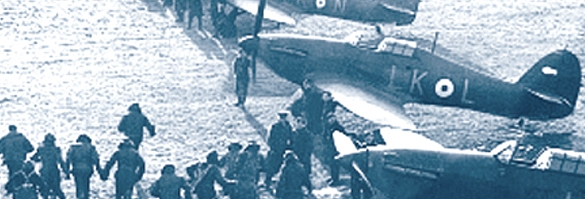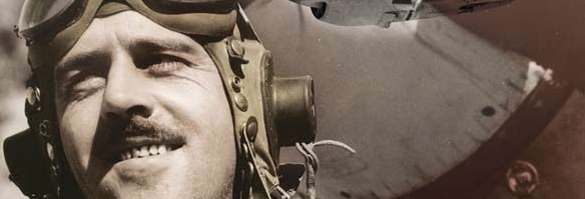Adam Claasen: Dogfight. The Battle of Britain (Sabretache)
Few of the many Battle of Britain accounts already on the shelves deal with the contribution of Australians and New Zealanders, and yet the Antipodean contingent represented a quarter of the 574 Commonwealth and foreign allies’ pilots and gunners who made up roughly a fifth of the almost 3000 men who defended Britain during the world’s first air battle. And they were quality fighters. As Dr Adam Claasen points out, the Anzacs supplied nearly a third of the Battle’s top ten aces—Pat Hughes, Brian Carbury and Colin Gray—who accounted for close to 50 enemy aircraft before the Battle concluded. Indeed, the seven Kiwi aces accounted for nearly 40 per cent of all New Zealand claims, and the six Australian aces accounted for close to 60 per cent of theirs. Seventy-two years after the conclusion of the Battle, we now have a clear evaluation and analysis of the deeds of the Anzac airmen as well as those of New Zealanders Keith Park and Archibald McIndoe. And it has been worth the wait.
Dogfight. The Battle of Britain is one of the first titles in the Anzac Battles Series. Edited by Glyn Harper, the series is devised specifically for an Australian and New Zealand readership and focuses on the great military battles of the twentieth century in which Australian and New Zealanders participated. Dr Claasen was the right person to pen this valuable addition to any Battle of Britain library. As well as the author of Hitler’s Northern War: The Luftwaffe’s Ill-fated Campaign, 1940–1945 which did much to widen our understanding of the Third Reich’s way of war, he is a senior lecturer in modern history and international relations at New Zealand’s Massey University, specialising in the Second World War and the role of air power in military campaigns.
Sadly, for such an important book, there are some careless errors—Dr Claasen has been let down by his copy editor. For example, on page 89 Dick Glyde is credited with a DSO when he was awarded the DFC; page 175 has John Crossman flying with 49 Squadron rather than 46; and the citation for his combat details in the page 216 endnote is John Curchin’s combat report. There are also a handful of errors of fact, such as the reference, on page 141, to Pat Hughes’ education at Fort Street High School at Haberfield. He lived at Haberfield, and the school was—and is—located at Petersham. There are also odd occasions when some facts have been elided such as, on page 53, the statement that Dick Glyde was denied admittance to the RAAF on medical grounds and so paid his own way to Britain where he joined the RAF. True on the surface, but he had actually commenced his RAAF cadetship before he was discharged on medical grounds in March 1934. A subsequent application was declined. Dr Claasen has drawn on a variety of sources such as his own interviews and correspondence, airmen memoirs, and official records. These few errors of fact appear to have resulted from secondary sources rather than primary evidence. (I have been advised that some errors have been corrected for the first reprint.)
Dr Claasen follows the general chronology of the battle but many of his sub-chapters are thematic. These changes in perspective—from action to analysis or discussion—are handled deftly. He has a gift for selecting just the right story such as Robert Spurdle’s first solo which is appropriately representative of every pilot. He wastes no words, doesn’t get bogged down with detail, does not thump the reader over the head with his opinions, and does not build up a story for dramatic impact. He recounts each episode in the airman’s career briefly and with little emotion. Take, for example the occasion when a man doing Gordon Olive a favour died tragically in flames. Dr Claasen quietly allows the reader to gain the full impact of a life cut short as a consequence of an act of kindness. He also has an eye for the humorous, and his account of Clifford Emeny’s little man against the RAF Goliath is a delight.
Dr Claasen’s discussion of life and death matters is finely balanced. In this thematic chapter, he deals with the tragedy of death, the senselessness of accidents, and puts the hedonism of the off-duty pilot in context as a mechanism to counter the rigours and stresses of battle. He also touches on the vagaries of war, for instance, contrasting the death of battle-hardened Dick Glyde with the survival of the barely experienced Clive Mayers on the same day. He sensitively deals with grief and George Gribble’s ‘Damn and blast this bloody war’ is the one curse that almost every airman who lost a close friend or comrade in battle must have uttered. Dr Claasen’s light touch is ever present. Just enough detail to convey the loss felt by those left behind, but never cloying and over done.
Storytelling aside, Dr Claasen has a gift for précis. His concise summary of Dowding’s system is one of the best I have read and he ably breaks down the complex, such as the mechanics of baling out, into easily digestible chunks. His analysis of the part played by the Antipodean contingent in the Battle is nothing short of brilliant.
Dr Claasen and I may not agree on the total number of Australians in the Battle of Britain but we agree on the significance of their contribution, along with that of their New Zealander colleagues-in-arms. This is an important work and Dr Claasen has offered something new and valuable in the Battle of Britain literary canon. Silly errors aside, I enjoyed it and learned much.







